When we held the first Media Learning Seminar in 2007, some of the community foundation leaders looked a bit puzzled. Hundreds of them had come in the winter to visit Miami but not everyone was sure why. Knight Foundation had invited them, as representatives of America’s more than 700 local foundations, to talk about what we saw as troubling trends in local media. Back then, the journalism weather was stormier in some communities than in others.
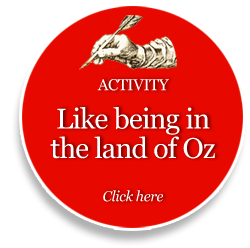 Community foundations are ways for people to invest in the future of their communities. They have boards that reflect the towns in which they exist. They take in donations, often large ones that grow their endowments. They make grants to support causes their donors and boards believe will improve local life.
Community foundations are ways for people to invest in the future of their communities. They have boards that reflect the towns in which they exist. They take in donations, often large ones that grow their endowments. They make grants to support causes their donors and boards believe will improve local life.
At our first meeting with them, Knight staff did a lot of talking. News and information, we said, is just as important to communities as good schools or safe streets or clean air. Excellent journalism can help a community solve problems. Without it, problems fester.
So I told the story of the little Deerfield Forum, a volunteer citizen website created by that town’s Friends of the Library with a $25,000 micro-grant from Knight via J-Lab. The library volunteers had been concerned because their local elections were not drawing any candidates for public office. No one seemed interested in solving local problems. Perhaps, the library volunteers thought, it’s because there was no newspaper to report them, no bloggers debating them. So the friends decided to report and write their own news stories about their little New Hampshire town.
Here is The Forum’s pledge:
- To report the news with accuracy and objectivity and treat people with respect.
- To provide content to help citizens make informed decisions about local issues.
- To facilitate community debate.
- To furnish an opportunity for creative expression.
- To correct our errors in a timely manner.
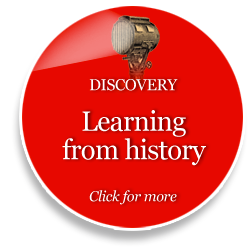 Any journalist might agree with those points. Bear in mind, though, these are volunteers. They just wanted to help their town — and they did. Once the information started flowing, things in Deerfield started happening. The number of people running for public office went up. Voter turnout went up. Next election, the same thing happened. Then it happened again. Seven years after its 2005 launch, The Deerfield Forum is still going strong. Its founder went on to win a seat in the state legislature.
Any journalist might agree with those points. Bear in mind, though, these are volunteers. They just wanted to help their town — and they did. Once the information started flowing, things in Deerfield started happening. The number of people running for public office went up. Voter turnout went up. Next election, the same thing happened. Then it happened again. Seven years after its 2005 launch, The Deerfield Forum is still going strong. Its founder went on to win a seat in the state legislature.
At times, only in a small town can you clearly see big things. For decades, scholars have debated the relationship between information and community engagement in our democratic republic. But the importance of local news is not something they debate in Deerfield. It’s something they practice. They know their volunteer journalism matters.
None of us predicted at that first conference that the recession of 2008 and 2009 was coming. We didn’t see it. But it did confirm what we were saying. The collapse in value of America’s newspaper companies was unprecedented, stunningly so. Suddenly, you could buy a share of New York Times stock for less than it cost to buy the Sunday edition of the New York Times. When the U.S. Senate’s Committee on Commerce, Science and Transportation held a hearing on the future of journalism, Knight President Alberto Ibargüen testified about the digital age paradox in local news. “A high school student can more easily access information about swine flu or the crisis in Darfour than corruption in city government or decisions about education in his town.
After that, the tone of the Media Learning Seminar changed. No longer were there any puzzled looks. No longer did Knight Foundation staff do most of the talking. The meeting became a place that community foundations could tell each other what they were doing about America’s crisis in local news. For the 2010 meeting, to confirm that we were on the same page, I worked with Esther Thorson from the University of Missouri to survey the foundation leaders.
I retold the Deerfield story, adding that some big city folks might object to the beautiful simplicity of the lessons of the little New Hampshire town that brought democracy back from the dead for the whopping sum of $25,000. Chicago and Detroit are not Deerfield, and urban ecosystems are more complex, more like a run through the rain forest than a stroll through the park. So such leaders as Terry Mazany of the Chicago Community Trust and Mariam Noland of the Community Foundation of Southeast Michigan were right to ask tough questions. Our cities face big challenges, they said, and our journalists need to be tigers.
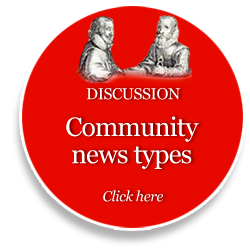 For the first time I brought up an example I’ve used many times since. The Texas Tribune, like the Deerfield Forum, didn’t exist in the 20th century. Its digital news site launched in November 2009, with $3.8 million in philanthropic support and professional staff. It focuses on state politics. One early story had the state rethinking the funding that was keeping dangerous day care centers in operation. Another had hospitals admitting that they were sending baby blood smears without permission to be part of the federal DNA registry. The Tribune won a new Knight grant to refine its model. It has a strong business and technological staff to go along with its journalists. We hold it up as proof that the new digital nonprofits have a real chance. In anybody’s rain forest, from the start the Tribune has been a tiger.
For the first time I brought up an example I’ve used many times since. The Texas Tribune, like the Deerfield Forum, didn’t exist in the 20th century. Its digital news site launched in November 2009, with $3.8 million in philanthropic support and professional staff. It focuses on state politics. One early story had the state rethinking the funding that was keeping dangerous day care centers in operation. Another had hospitals admitting that they were sending baby blood smears without permission to be part of the federal DNA registry. The Tribune won a new Knight grant to refine its model. It has a strong business and technological staff to go along with its journalists. We hold it up as proof that the new digital nonprofits have a real chance. In anybody’s rain forest, from the start the Tribune has been a tiger.
Why all this talk about media ecosystems? Because thinking about news and information that way helps us see how it really works. Community foundations are used to a local media dominated by daily newspapers. Local dailies may indeed be the tall trees in the forest. But they aren’t the only trees. There are weekly papers, ethnic papers, alternative papers, free papers, monthlies, newsletters, magazines, radio, TV, and now blogs, websites and social and mobile media.
In this information environment, when anyone who is networked can create as well as consume news and information, we have city hall websites, nonprofit websites, church and school and library websites, to name only a few. Yet despite all the digital diversity, there are some trends that apply, some laws of the jungle. Here are some of them:
 First, information consumption keeps growing. Statisticians from the University of California at San Diego and elsewhere report that information consumption by a typical American adult now takes up 12 hours a day. How is that possible? Anyone with children knows how. People today consume more than one form of media at the same time.
First, information consumption keeps growing. Statisticians from the University of California at San Diego and elsewhere report that information consumption by a typical American adult now takes up 12 hours a day. How is that possible? Anyone with children knows how. People today consume more than one form of media at the same time.
Researchers working for Microsoft were among the first to study this. One called it “continuous partial attention.” If you are listening to the radio, reading work email and talking on the phone, that counts as triple. If you did that all day, you only need four hours to consume 12 hours’ worth of media. Whether we like it or not, multi-tasking is here to stay.
Next, traditional media keeps shrinking. There’s no simple way to say it. All the new media competition means that fewer people are watching traditional local TV news or network TV news or reading the daily newspaper. Does this mean no one cares about news? No. Online users of news are rising fast.
Third: It’s all about the money. Many daily newspapers have larger audiences online than they do in print. So why can’t they make more money? Because the economics of digital advertising are different. Online ads bring in less than a tenth of the money that print newspaper ads used to bring in. Every year, print advertising falls. The World Association of Newspapers said that most of the world’s media executives believe that by 2015, most of their revenue will need to come from online sources. But North American editors, perhaps still suffering from their addiction to print advertising, don’t think they will need to get as much of their revenue digitally. Unfortunately, the American editors are wrong.
Finally: Digital is here to stay. Media consumption becomes more digital with each generation. This is true in any developed country. Since these statistics were collected, digital media has become even more important to the young. Older folks prefer television and newspapers. Choice of form or mode of media happens at a young age and stays with us.
If we’ve agreed that media is in transition, let’s take a look at a community media ecosystem in the context of what foundation leaders see. Obviously ecosystems vary from place to place. We’ve drawn our basic ecosystem elements from the report “Informing Communities,” by the Knight Commission on the Information Needs of Communities. It was the first major commission to look at news and information since the creation of public broadcasting. In Appendix One, the report says, a healthy community should have eight things going for it.
They are:
1. Most government information and services for my city can be found through a clear, easy-to-use portal. Of the community foundation leaders we surveyed, more than half said their towns or cities did not have such a portal. This is disturbing for several reasons, not the least of which is the fact that government information belongs to the people. If the government does not put the public’s information on the Web in an accessible way, how is civic life supposed to happen? In our ecosystem graphic, we’ll turn the stream black to symbolize a lack of a good public information flow.
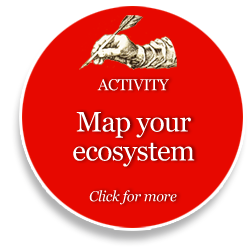 2. Government in my city offers public information openly and holds meetings openly. Most community foundation leaders said, yes, that’s the case. So on our ecosystem map, we will leave the sun turned on. (As a former newspaper editor, however, I need to observe that this perception, though valid, is at odds with Sunshine Week research, which says as many as 80 percent of the local governments violate their own open records and meeting laws.) But we’re describing a community foundation ecosystem experience here, so no change in the map.
2. Government in my city offers public information openly and holds meetings openly. Most community foundation leaders said, yes, that’s the case. So on our ecosystem map, we will leave the sun turned on. (As a former newspaper editor, however, I need to observe that this perception, though valid, is at odds with Sunshine Week research, which says as many as 80 percent of the local governments violate their own open records and meeting laws.) But we’re describing a community foundation ecosystem experience here, so no change in the map.
3. Quality journalism in your city: growing in volume, shrinking or staying same? Seventy-five percent of the community foundation leaders surveyed said the news stream is shrinking. (When we had asked the leaders before the media meltdown of 2008-2009, only 41 percent of them said quality local journalism was shrinking. Hence those puzzled looks at the first Media Learning Seminar.) To symbolize the decline in these community institutions that have been there for a century or more, we’ll color the trees black in our local ecosystem map.
4. Local websites on which ordinary citizens can discuss and debate community events and issues. Yes, a slim majority of community foundation leaders agree there are local websites and other digital venues for debate. But the vote is close. In our ecosystem map, those tweeting birds symbolize debate. We’ll need to leave a few birds in and take some out.
 5. Vibrant libraries or other centers at which people can learn digital literacy and get access to the Internet. Absolutely, community foundation leaders said, by a clear and strong majority, we have libraries and other places at which people can learn to get on the Internet. Still, in a fourth of the communities, this is not the case. That would be like a fourth of America not being connected to roads. Even so, most of the leaders felt good about their libraries, so we’ll keep our frog jumping in the ecosystem map. Libraries and other community centers may be a place on which to build.
5. Vibrant libraries or other centers at which people can learn digital literacy and get access to the Internet. Absolutely, community foundation leaders said, by a clear and strong majority, we have libraries and other places at which people can learn to get on the Internet. Still, in a fourth of the communities, this is not the case. That would be like a fourth of America not being connected to roads. Even so, most of the leaders felt good about their libraries, so we’ll keep our frog jumping in the ecosystem map. Libraries and other community centers may be a place on which to build.
6. Easy to find information on issues I think are important, such as health, jobs, the environment, arts and so on. Mostly, community leaders said no, they didn’t have that easy-to-find information. Quality of life information is important, of course. Everything doesn’t have to be investigative reporting. Some projects might tell people what’s going on that they want to know. News you can use. It’s the underbrush in our ecosystem map, and because the leaders said it’s not there, we’ll remove it.
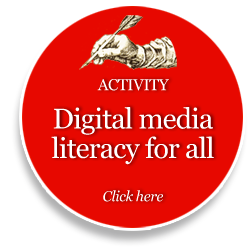 7. The schools teach media literacy. Many have no idea what their schools are doing, but those who have an opinion said no, there isn’t enough teaching of media literacy. From the reports we have seen, we would agree with the foundation leaders on this. The Knight Commission said digital media literacy should be taught in all schools, but that still hasn’t happened. There’s still a lot of teaching to the test. The test, by and large, doesn’t care if you know civics, news literacy or any of the things we hope citizens of the 21st century will know. In our map we’ll get rid of the rocks and clouds.
7. The schools teach media literacy. Many have no idea what their schools are doing, but those who have an opinion said no, there isn’t enough teaching of media literacy. From the reports we have seen, we would agree with the foundation leaders on this. The Knight Commission said digital media literacy should be taught in all schools, but that still hasn’t happened. There’s still a lot of teaching to the test. The test, by and large, doesn’t care if you know civics, news literacy or any of the things we hope citizens of the 21st century will know. In our map we’ll get rid of the rocks and clouds.
8. High speed, affordable broadband accessible by everyone. By the largest margin in the entire survey, community foundation leaders said this just had not happened. Seventy-six percent said they didn’t have universal broadband. Of all the survey items this is the one that’s a bit out of date. (If we were to do the survey again next year, the White House would say, we’d see a picture of broadband everywhere.) But having connections is not the same as using connections. The poor, the elderly and rural America are second-class citizens regarding broadband. So what should we wipe out in the ecosystem map to symbolize broadband adoption? The sky.
What these foundation leaders think matters, since they control $50 billion in endowments, and make at least $4 billion a year in local grants. To review: Government portal, no; open government, yes; journalism shrinking; debate isn’t vibrant; little quality of life information; libraries are good; no digital media literacy and no universal broadband.
The first graphic below shows a healthy media ecosystem, according to the Knight Commission, and the second shows what community foundation leaders said their local media ecosystems actually look like.
Who turned out the lights? It’s safe to say the nation’s community foundation leaders don’t have the most positive views of their local news and information systems. The good news is that this analysis presents the lowest common denominator. In any given community, there may have been more strong points than shown here, places on which to build.
Community foundations are giving more to local news and information than they used to and planning to give even more in the future. What are the smart things they are doing? They are increasing their own communications capacities as well as their grantees, experimenting with new digital approaches and sharing their learning, making more detailed maps of their own community media ecosystems. No matter what they want to accomplish, community and place-based foundations know they need healthy news-and-information ecosystems to do it.
This is an updated version of a talk presented at the annual Media Learning Seminar for Community Foundations as part of the Knight Community Information Challenge. Further advice for foundations can be found in the booklet “Journalism and Media Grant Making.”
- OFF
- ON
-
‘Time to change journalism’
-
If investigative journalists don’t explain…
-
The story is not all that matters
-
Journalists should like the #opendata movement
-
Ready for ‘open journalism’?
-
What community foundations say about local media
-
Arts: A local affair
-
Does media innovation encourage voting?
-
A nameless idea that lingers
-
A community convention







 Learning layer directory
Learning layer directory
